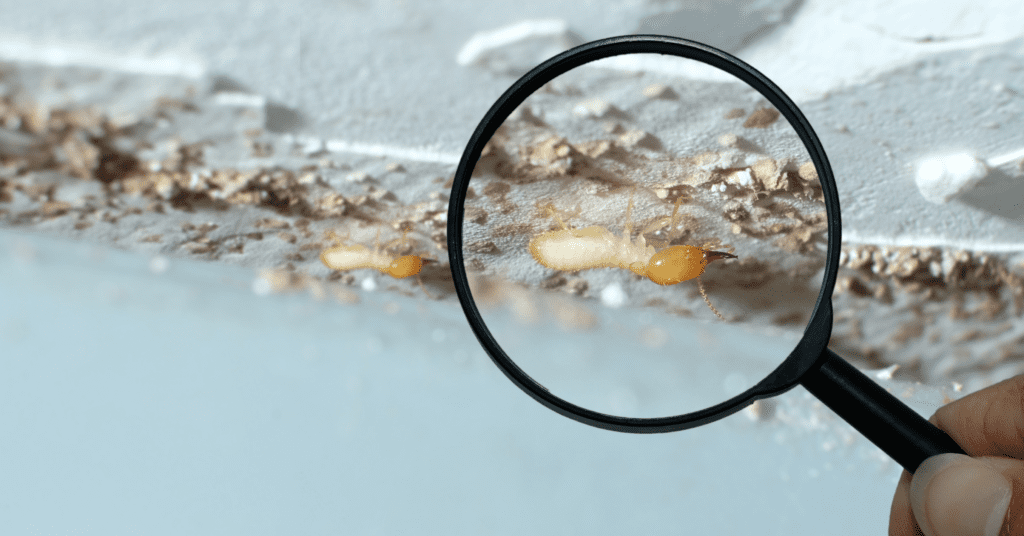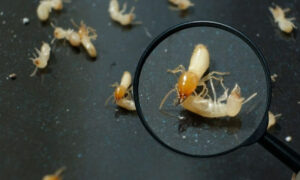Termites are often called “silent destroyers” for a good reason. They can invade your home, business, or property without any immediate signs, eating away at wood, flooring, and even structural supports. By the time most property owners notice them, the damage is already extensive—and expensive. The best line of defense? A termite inspection done correctly, thoroughly, and regularly.
In this comprehensive guide, we’ll explore everything you need to know about termite inspections: why they matter, how they’re performed, what signs to look for, and what to expect if termites are found. Whether you’re a homeowner, real estate investor, or building manager, this knowledge can save you thousands of dollars and a great deal of stress.
What Is a Termite Inspection?
A termite inspection is a specialized process carried out by trained professionals to detect the presence of termites and assess any damage they may have caused. Unlike general pest inspections, termite inspections are focused solely on wood-destroying insects, especially subterranean and drywood termites.
Inspectors look for:
- Active termites
- Termite nests or colonies
- Signs of past infestations
- Structural damage to wood
- Conditions conducive to termite activity
The goal is both detection and prevention. Identifying an infestation early allows for prompt treatment and long-term protection.
Why Termite Inspections Are Essential
Termites cause billions of dollars in property damage each year worldwide. The risk isn’t limited to old homes or wooden structures; termites can find their way into virtually any building type. Here’s why regular inspections are critical:
1. Early Detection Prevents Expensive Repairs
Termites are hard to spot with the untrained eye. They eat wood from the inside out, often leaving the exterior surface intact. A professional inspection catches these signs early before the damage becomes serious and expensive to repair.
2. Real Estate Transactions Require It
If you’re buying or selling a home, many lenders require a termite inspection before the mortgage is finalized. It helps protect the buyer from inheriting costly problems and gives sellers peace of mind.
3. Preventative Action Saves Time and Money
Even if your property is currently termite-free, inspections help identify conditions that could lead to future infestations, such as moisture buildup, soil-to-wood contact, or cracks in the foundation.
4. Insurance Doesn’t Cover Termite Damage
Most homeowners’ insurance policies exclude termite-related damage, classifying it as preventable. That means it’s up to you to detect and treat infestations early to avoid out-of-pocket repairs.
Signs You Might Need a Termite Inspection
While professionals can detect early warning signs that most people miss, here are some common red flags that suggest you should schedule an inspection immediately:
- Mud tubes on exterior walls or foundation
- Discarded wings near windows or doors
- Hollow-sounding wood when tapped
- Tiny holes in drywall or paint
- Buckling wood, warped floors, or sagging ceilings
- Frass (termite droppings) resembling sawdust or coffee grounds
- Clicking sounds inside walls (caused by termites banging their heads)
Even one of these signs can point to an active infestation that needs prompt attention.
What Happens During a Termite Inspection?
A professional termite inspection typically lasts between 30 minutes to 2 hours, depending on the property’s size and complexity. Here’s what the process usually involves:
1. Exterior Examination
Inspectors begin outside your home or building, checking for:
- Mud tubes along foundations or exterior walls
- Wood-to-ground contact areas (like deck posts)
- Landscaping features that trap moisture
- Cracks or gaps in foundations
- Wooden fences or tree stumps near the structure
2. Interior Inspection
Inside, they focus on:
- Baseboards and window frames
- Crawl spaces and attics
- Door frames and wooden beams
- Inside closets, cabinets, and under sinks
- Moisture-prone areas like bathrooms and kitchens
They may use tools like moisture meters, infrared cameras, or sounding tools to detect hidden infestations.
3. Report and Recommendations
After the inspection, you’ll receive a detailed report outlining:
- Presence of termites or evidence of activity
- Types of termites identified (subterranean, drywood, dampwood)
- Structural damage (if any)
- Areas at risk
- Recommended treatment plan (if needed)
- Preventative steps to take
The report is essential, especially during property sales, and should be kept for your records.
Types of Termites and What They Mean for Inspection
Not all termites are the same, and understanding their behavior can help in identifying the right inspection and treatment approach.
1. Subterranean Termites
- Most common and destructive type
- Live underground and build mud tubes to reach food sources
- Thrive in moist environments
Inspection Focus: Soil contact, foundation cracks, mud tubes
2. Drywood Termites
- Live entirely inside wood
- Don’t require contact with soil
- Often found in furniture or wooden framing
Inspection Focus: Wood joints, furniture, attic framing
3. Dampwood Termites
- Prefer moist and decaying wood
- Less common in modern buildings but still a threat
Inspection Focus: Wet areas, wood near plumbing leaks
Each type requires a slightly different inspection technique, which is why it’s essential to hire professionals with experience in all termite varieties.
How Often Should You Get a Termite Inspection?
Experts recommend getting a professional termite inspection at least once a year. However, you may need more frequent checks if:
- You live in a termite-prone region
- Your property has had past infestations
- There’s significant wood-to-soil contact
- You’ve recently undergone water damage or foundation work
Properties for sale or newly purchased should undergo immediate inspection, regardless of timing.
What to Do If Termites Are Found
If an inspector finds evidence of termites, don’t panic. Modern termite treatments are highly effective and safe when handled correctly. Your options may include:
1. Liquid Termiticides
Applied around the perimeter or injected into affected areas, these create a barrier that kills or repels termites.
2. Bait Systems
Stations placed around your home lure termites and poison the colony slowly, reducing long-term infestation.
3. Fumigation
For severe infestations, tenting and fumigation may be required—especially for drywood termites.
4. Spot Treatments
Localized applications of foam, dust, or liquid products to specific problem areas.
A professional will help determine the best treatment based on the species, location, and severity of the infestation.
How to Prepare for a Termite Inspection
Here are a few steps you can take to ensure your inspection goes smoothly:
- Clear access to walls, crawl spaces, and attics
- Move furniture away from baseboards
- Trim vegetation near the foundation
- Remove storage items from under sinks and inside garages
- Provide access to utility rooms, garages, and sheds
Proper preparation ensures the inspector can thoroughly examine all potential problem areas.
Preventing Future Infestations
Even after treatment, ongoing vigilance is essential. Here’s how to make your property less inviting to termites:
- Fix leaks and control moisture
- Seal foundation cracks
- Keep woodpiles and mulch away from walls
- Use termite-resistant building materials
- Schedule annual inspections
- Install physical barriers in new construction
Prevention is far less expensive than remediation—simple habits can go a long way.
Cost of a Termite Inspection
The cost of a termite inspection varies based on property size, location, and the inspection’s complexity. On average:
- Basic inspections: $75 – $150
- Real estate inspections with documentation: $150 – $300
- Detailed reports or additional services (like moisture mapping): May cost more
Some companies offer free inspections, especially if treatment is needed. However, free isn’t always better—make sure the provider is certified and reputable.
Choosing the Right Termite Inspection Service
Here’s what to look for when hiring a professional:
- Licensing and certification
- Experience with various termite types
- Comprehensive inspection reports
- Treatment and prevention plans
- Positive customer reviews
- Insurance coverage
Avoid companies that push immediate treatment without a full inspection. A reliable provider will explain your options, show evidence, and offer transparent pricing.
Final Thoughts
A termite inspection isn’t just a routine check—it’s an investment in the longevity and safety of your property. By catching problems early, identifying risk factors, and implementing prevention strategies, you can avoid the headaches and expenses of termite damage down the road.
Whether you suspect an infestation, are buying or selling property, or just want peace of mind, scheduling a professional inspection is one of the smartest decisions a property owner can make.



































